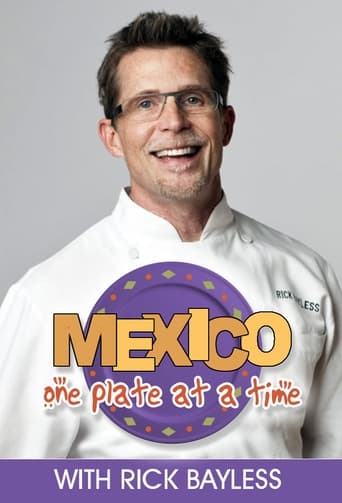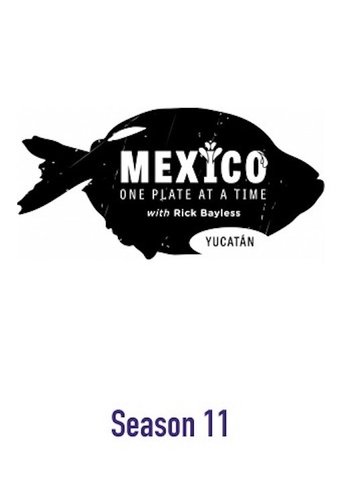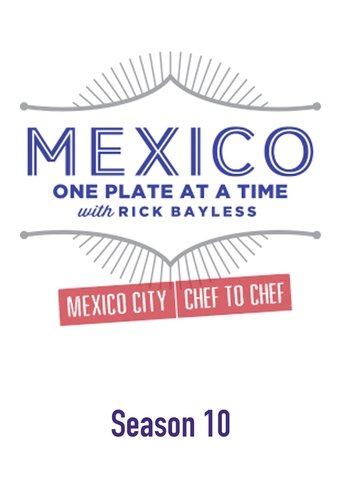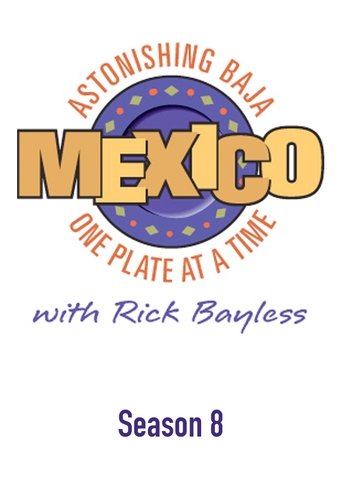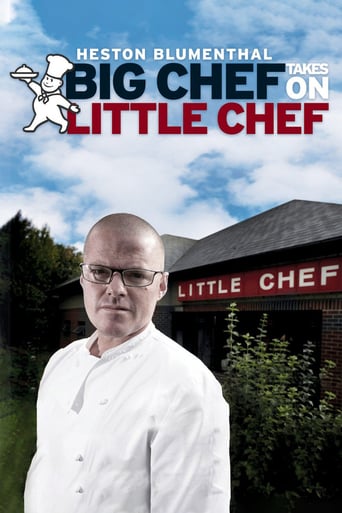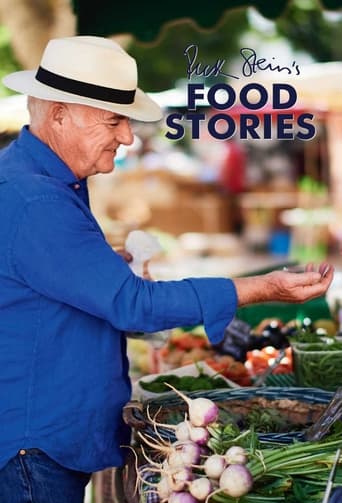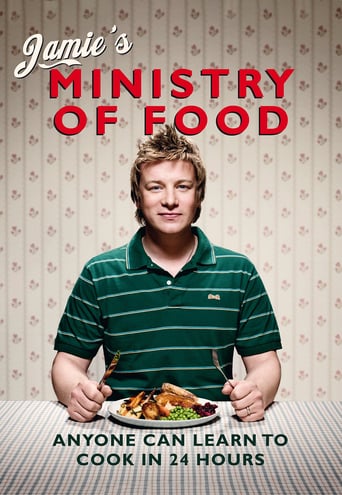Mexico: One Plate at a Time Season 7
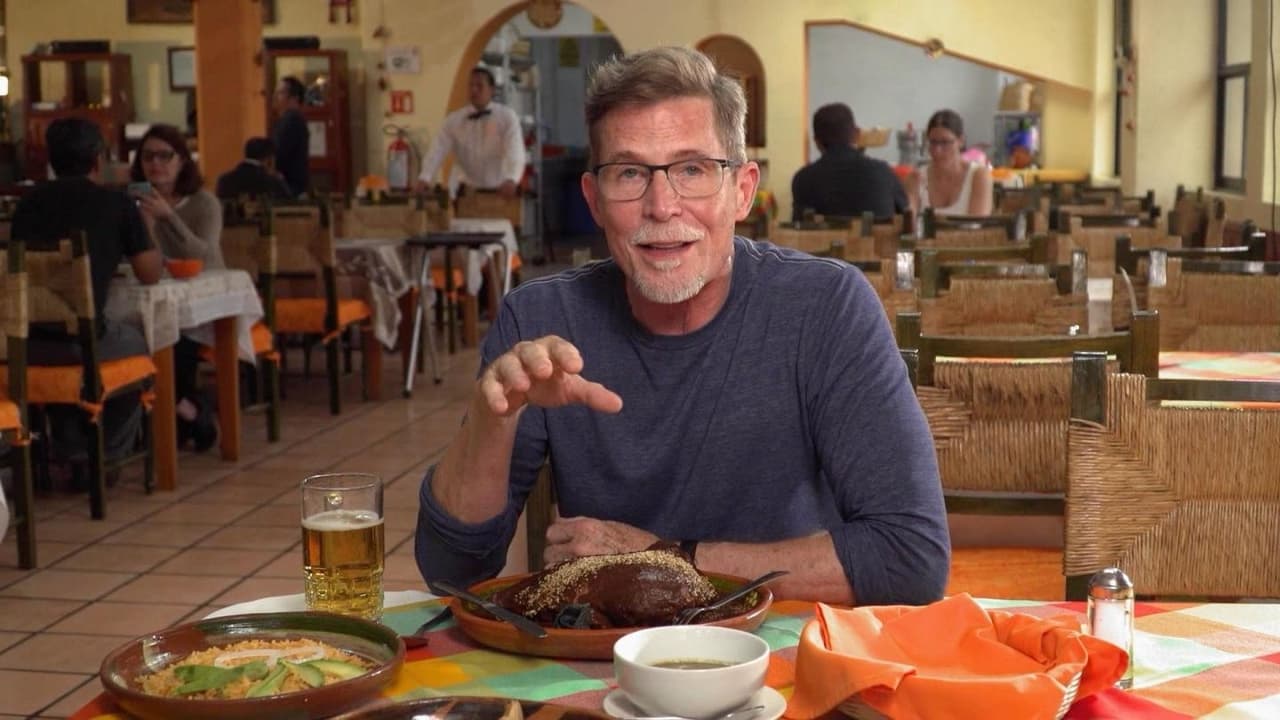
Rick Bayless, the beloved chef and restaurateur, seamlessly weaves together techniques, recipes, cultural musings and off-the-wall surprises. Throughout the series, Rick translates his Mexican travel adventures into unforgettable parties from intimate fireside suppers and casual backyard cocktails with friends to big, boisterous bashes for 25.
Watch NowWith 30 Day Free Trial!
Mexico: One Plate at a Time
2003


Rick Bayless, the beloved chef and restaurateur, seamlessly weaves together techniques, recipes, cultural musings and off-the-wall surprises. Throughout the series, Rick translates his Mexican travel adventures into unforgettable parties from intimate fireside suppers and casual backyard cocktails with friends to big, boisterous bashes for 25.
Watch Trailer
Mexico: One Plate at a Time Season 7 Full Episode Guide
Rick and his daughter, Lanie, check out a fabulous fish fillet at a neighborhood restaurant in Mexico City, and then, at a seafood street stall, they get rapturous over a plate of succulent garlicky prawns that rivals the best scampi in the world. The common denominator of these two dishes? It’s one of the cornerstones of Mexican cooking, Mojo de Ajo (literally, “bath of garlic”) – a sauce made by slowly simmering garlic in olive oil and seasoning it with lime and chiles. Back home in Chicago, Rick shows us how he plants, grows and cures this flavorful garlic variety, then uses some to make a big batch of Mojo de Ajo – a jar of “liquid gold” to keep on hand for enhancing just about anything. First, he uses some of it to make Mixiotes of Woodland Mushrooms with Slow-Cook Garlic and Mexican Herbs, bathed in mojo and baked in parchment.
Chorizo, the succulent pork sausage seasoned with chiles, spices and a touch of vinegar, is the “bacon of Mexico” – the perfect accompaniment for eggs and, like bacon, a versatile ingredient for cooking that can give any dish a serious head start on flavor. At his neighborhood Mexican grocery in Chicago, Rick shows us fresh-made chorizo sold at the butcher counter and talks about how it is made. Buying a batch of the sausage to take home, he quickly turns it into a Caramelized Onion and Chorizo to use for a taco filling. Then he transforms that full-flavored mixture into a dressing for a Chorizo Spinach Salad with jicama, a Mexican-style take on the classic wilted spinach salad with warm bacon dressing. At the Medellin Market in Mexico City, he introduces us to green chorizo, a popular 20th-century innovation from the town of Toluca, made with fresh herbs and cilantro, now enjoyed all over Mexico. In the U.S., it’s not easy to find.
Rick’s out to dispel the notion that an enchilada is all about smothering tortillas in sauce and gooey cheese. At Café Azul y Oro in Mexico City, he shows us the iconic Mexican version of the dish: a corn tortilla in a red mole sauce and rolled around a light, simple chicken filling. From that classic formula things can, of course, get more inventive and Rick shares with us one of the more unusual, though still classically grounded enchiladas on Chef Ricardo Muñoz-Zurita’s menu: an enchilada of jamaica, or dried hibiscus flowers that tastes like a cross between pickled beets and cabbage. From there he takes us to Café Tacuba, a Mexico City Institution since 1912, where the signature Enchilada Especial is a comforting concoction with a chicken, spinach and poblano chile filling, bathed in velouté sauce and browned under the broiler. It’s so good, he can’t resist showing us how to make his one Café Tacuba-Style Creamy Chicken Enchiladas in his home kitchen in Chicago.
We find Rick and his daughter, Lanie, at the Mexico City’s colorful Sonora Market, an emporium of medicinal herbs and the best place in town to buy cazuelas, the beautifully rustic earthenware cooking and serving casseroles that define a whole class of stews and taco fillings. We tend to think of taquerías for their familiar grilled and griddled fillings, like carne asada. But, Rick explains, there’s a whole world of stands and shops that have no grill at all and specialize in satisfyingly homey, slow-cooked fillings made in cazuelas with everything from stewed meat to richly flavorful vegetables. Rick and Lanie check out El Güero, a Mexico City institution, popularly known as “Tacos Hola!,” that specializes in slow-cooked taco fillings. Back home in Chicago, Rick and Lanie plan a cazuela-taco dinner. Lanie throws together a quick Pork with Smoky Tomato Sauce and Potatoes in the crockpot before heading off to school. By dinnertime, it’ll be meltingly tender and richly flavored.
Carnitas – chunks of pork cooked slowly in lard until they’re golden and crisp on the outside and meltingly tender inside – are a weekend family tradition in Mexico. At the Medellin Market in Mexico City, Rick gives us an insider’s look at how they’re made every Saturday and Sunday in a huge copper cauldron, and served up with fresh corn tortillas and crispy chicharrón (pork cracklings). But what if a carnitas craving strikes and you’re not in Mexico on a weekend? No worries. Back in Chicago, Rick demonstrates his signature method for making fabulous carnitas right in a standard home oven. Then, thinking beyond pork, Rick shares a creative take on carnitas at the splashy seafood restaurant, Contramar, where the dish gets a deep-sea do-over with chunks of fresh-caught tuna.
What could be better than a freshly made, gooey, warm quesadilla? Rick answers the question by showing us how to make the flour tortillas from scratch. What could be better than that?Well, actually, in Mexico, Rick explains, quesadillas and flour tortillas have nothing to do with each other. He takes us to the Bazar Sabado, a charming colonial-style labyrinth of handicrafts shops in the heart of Mexico City’s bohemian Coyoacán district, to experience the true art of the quesadilla. In the Bazar’s shady courtyard, the delicate treats are made the traditional way from freshly ground corn masa, patted onto a massive cast-iron griddle, topped with cheese and fillings and baked to a golden finish. For a more rough-and-tumble look at the same idea, we visit Lagunilla, the city’s fantastical flea-market, where vendors turn out all kinds of mouthwatering quesadillas and other toasted-masa snacks on a griddle over a charcoal fire.
Mole is an idea that’s half pre-Columbian, half European, and 100% Mexican – a sauce, a preparation and a national dish that rivals the culinary masterpieces of the world’s greatest cuisines. Rick and his daughter, Lanie, set off on a culinary journey to explore the mysteries of mole that takes them from the mile-high piles of dried chiles in Mexico City’s vast La Merced market to stalls selling towering mounds of concentrated mole paste. Back in Chicago, they’re on a mission to make mole from scratch. It’s an all-day labor of love to be sure, but Rick breaks the complex process down into easy steps, giving tips on all the ingredients – from sesame seeds and tomatillos to chiles and chocolate – that give mole its richly layered flavor. As the sauce simmers over a wood fire in the backyard, Rick and Lanie use some of it to make a succulent Laquered Chicken in Classic Red Mole and whip up some Classic Mexican White Rice with Sweet Plantains and a Mexican crudité platter.
Nothing captures the spirit of a day at the beach in Mexico like the fresh seafood cocktail or ceviche. But you don’t have to be on the coast to enjoy it. Rick finds a classic version at a favorite spot with the feel of a beachside fish shack – right in the heart of landlocked Mexico City. Then, in search of more “inland ceviche” surprises, he hits the streets and takes us to a major-league marisqueria with a menu to rival any great seafood restaurant in town – all created in a stand no larger than a fishing boat. Rick enjoys the bracing blend of octopus, fish, shrimp and hot sauce known as Vuelve a la Vida (“Come Back to Life,” so named because it’s a popular a hangover cure). At a nearby fish market, he checks out the catch of the day from both the Pacific and Gulf coasts, and shares tips on the best choices for homemade ceviche. In Chicago, he makes a quick Frontera Ceviche, a preparation that’s been a mainstay at his Frontera Grill for years.
Over a breakfast of tortas – Mexican sandwiches filled, in this case, with Rick’s quick Mexican scrambled eggs, beans, and avocados – Rick and his daughter, Lanie, plan an all-day torta marathon in Mexico City. Their quest beings at the city’s charming Sunday flea market, Lagunilla, where they check out some simple, yet mouthwatering tortas, with a succulent filling of salt cod bacalao. Next stop: Don Polo, a gleaming 1950s-style chrome and neon diner, famous for its menu of griddled tortas. Rick and Lanie watch how they’re made and try a Cubana with chorizo, pork and ham. Then it’s on to El Pialadero – The Cattle Roper – for the famed Guadalajara specialty, Tortas Ahogadas, or “drowned” sandwiches, stuffed with juicy braised beef and smothered in a brothy tomato-oregano sauce. It’s a treat so irresistibly messy that it’s served with plastic gloves.
In their Chicago backyard, Rick and his daughter, Lanie, gather the last of the season’s tomatoes to make a big batch of Salsa Mexicana, the fresh tomato salsa sometimes known as Pico de Gallo. And that’s the starting point for a fast-paced salsa dance that goes way beyond tomatoes. In Mexico, salsas can be bright and fresh, dark and earthy, red or green, raw or roasted – and they’re more of a condiment for food than a dip for chips. At Los Parados, a favorite Mexico City taquería, Rick and Lanie show us the three pillars of Mexican salsa: that familiar fresh-tomato salsa Mexicana, salsa de molcajete made from roasted tomato, chile and garlic pounded in a lava-stone mortar, and red chile salsa, made by toasting, soaking and grinding dried chile de árbol. But that’s just the beginning. At Manolo, another popular taquería, they discover a rich, spicy, peanut salsa and a classic, creamy avocado-tomatillo salsa.
“What is a taco, anyway?” muses Rick over an upscale lobster taco at his white tablecloth restaurant, Topolobampo. “Is it crispy or soft? Grilled or griddled? Street food or taquería fare? Fast food or fine dining?” The answer is, “all of the above … and a whole lot more.” And to prove it, Rick heads to Mexico City, for a non-stop taco trek. It starts at Fishmart, a neighborhood seafood restaurant in trendy Condesa with the lobster tacos that inspired Rick’s Topolobampo version – succulent chunks of grilled lobster and black beans, wrapped in a warm corn tortilla. Following his nose, and the smell of smoldering charcoal and sizzling meat, Rick moves on to explore some taquerías – one renowned for its char-grilled tacos al carbon and another for pork tacos al pastor, made on a revolving vertical grill, gyros-style. Here too, it’s all about simplicity: a few perfect mouthfuls of mind-blowing meat and super fresh tortilla.
“What is a taco, anyway?” muses Rick over an upscale lobster taco at his white tablecloth restaurant, Topolobampo. “Is it crispy or soft? Grilled or griddled? Street food or taquería fare? Fast food or fine dining?” The answer is, “all of the above … and a whole lot more.” And to prove it, Rick heads to Mexico City, for a non-stop taco trek. It starts at Fishmart, a neighborhood seafood restaurant in trendy Condesa with the lobster tacos that inspired Rick’s Topolobampo version – succulent chunks of grilled lobster and black beans, wrapped in a warm corn tortilla. Following his nose, and the smell of smoldering charcoal and sizzling meat, Rick moves on to explore some taquerías – one renowned for its char-grilled tacos al carbon and another for pork tacos al pastor, made on a revolving vertical grill, gyros-style. Here too, it’s all about simplicity: a few perfect mouthfuls of mind-blowing meat and super fresh tortilla.
“What is a taco, anyway?” muses Rick over an upscale lobster taco at his white tablecloth restaurant, Topolobampo. “Is it crispy or soft? Grilled or griddled? Street food or taquería fare? Fast food or fine dining?” The answer is, “all of the above … and a whole lot more.” And to prove it, Rick heads to Mexico City, for a non-stop taco trek. It starts at Fishmart, a neighborhood seafood restaurant in trendy Condesa with the lobster tacos that inspired Rick’s Topolobampo version – succulent chunks of grilled lobster and black beans, wrapped in a warm corn tortilla. Following his nose, and the smell of smoldering charcoal and sizzling meat, Rick moves on to explore some taquerías – one renowned for its char-grilled tacos al carbon and another for pork tacos al pastor, made on a revolving vertical grill, gyros-style. Here too, it’s all about simplicity: a few perfect mouthfuls of mind-blowing meat and super fresh tortilla.
Free Trial Channels
Seasons


